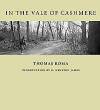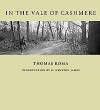
- Afhalen na 1 uur in een winkel met voorraad
- Gratis thuislevering in België vanaf € 30
- Ruim aanbod met 7 miljoen producten
- Afhalen na 1 uur in een winkel met voorraad
- Gratis thuislevering in België vanaf € 30
- Ruim aanbod met 7 miljoen producten
Zoeken
€ 36,45
+ 72 punten
Omschrijving
In the Vale of Cashmeremarks the culmination of acclaimed photographer Thomas Roma'sfour-year odyssey into a densely wooded, secluded corner of Brooklyn's Prospect Park, where gay cruising dominates the footpaths and trails. The Vale ofCashmere, a name that dates back to the 1890s, has long been a meeting place for gay men. and currently, mostly Black men. However, encounters occur between men of all walks of life, as well as gender and sexual identities. With his large, tripod-mounted, hand-made camera, Roma stepped into the center of this community, an obvious but mostly ignored presence. Understandably, many of the menRoma approached to photograph in a formal portrait were not interested, butsurprisingly, many were. After they agreed to be photographed, Roma would offer themen time and the opportunity to show him something of themselves they might nothave the chance to otherwise. Although originally conceived solely as a portrait project, the more time Romaspent in the Vale of Cashmere, the more the physical beauty of the Vale becameinseparable from the portraits, and many landscape photographs were made to beincluded in the book. In addition to the landscapes, Roma utilized a custom modified miniaturecamera to provide sequential pictures depicting the steady march of themostly solitary men as they cruised the paths and roadways of the Vale. These candidphotographs, which run along the bottom of the pages of landscape photographs, arereproduced in small scale so as to make it impossible to identify any individual. Roma's motivation for doing the project camefrom his wish to honor the memory of a dear friend who died of AIDS in 1991, andwho introduced him to the Vale of Cashmere.
Specificaties
Betrokkenen
- Auteur(s):
- Uitgeverij:
Inhoud
- Aantal bladzijden:
- 168
- Taal:
- Engels
Eigenschappen
- Productcode (EAN):
- 9781576877159
- Verschijningsdatum:
- 27/10/2015
- Uitvoering:
- Hardcover
- Formaat:
- Genaaid
- Afmetingen:
- 213 mm x 267 mm
- Gewicht:
- 997 g

Alleen bij Standaard Boekhandel
+ 72 punten op je klantenkaart van Standaard Boekhandel
Beoordelingen
We publiceren alleen reviews die voldoen aan de voorwaarden voor reviews. Bekijk onze voorwaarden voor reviews.











